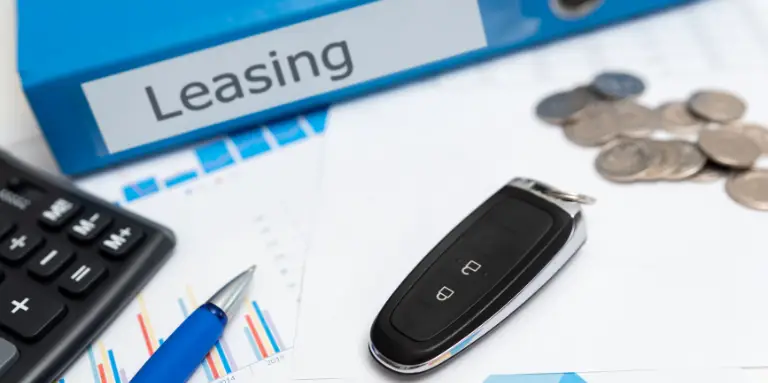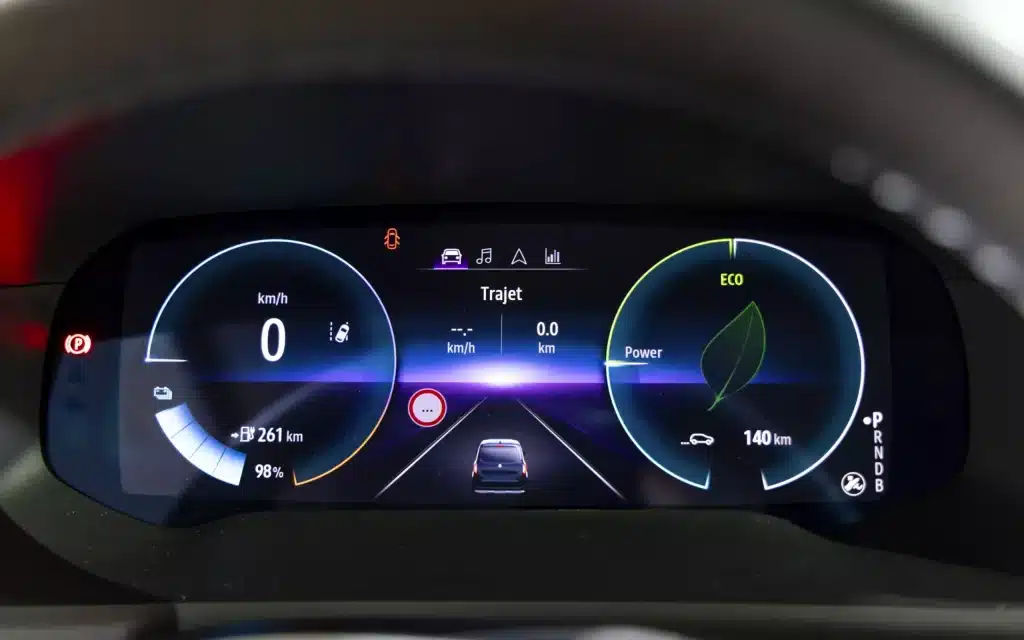Discover our exclusive offers
Long-term hire or leasing: what are the differences for your company?
What is long-term leasing and what are its advantages?
Long-term leasing (LLD) is a contract that allows you to hire a new vehicle for a fixed period, generally 12 to 60 months, in exchange for monthly payments. This formula allows you to use a car without becoming its owner, as the lessor remains the owner of the vehicle for the duration of the lease.
There are many advantages to long-term leasing. Firstly, it gives you better visibility and control over your car budget, because monthly payments often include servicing, repairs and insurance. What's more, full service leasing offers great flexibility, so you can change vehicles regularly and always have access to the latest models. For companies, long-term leasing offers tax advantages, as the lease payments can be deducted from expenses and VAT can be reclaimed under certain conditions.
Another major advantage is the simplification of administrative procedures. The lessor takes care of registration, maintenance and repairs, freeing the lessee from these worries. Finally, leasing avoids the risks associated with vehicle depreciation and resale worries, since the vehicle is simply returned to the lessor at the end of the contract.
How does Lease to Own (LTO) work and why consider it?
Leasing with an option to purchase (LOA) is similar to long-term leasing, but with one major difference: it offers the option of buying the vehicle at the end of the contract. Leasing involves making monthly payments for the duration of the contract, generally between 12 and 60 months, as with full service leasing.
There are a number of reasons to consider the LOA. Firstly, it offers greater flexibility at the end of the contract, allowing the lessee to choose between buying the vehicle, returning it, or taking out a new contract for another vehicle. This option can be particularly interesting for those who want to test a vehicle over a long period before deciding to buy it.
What's more, like long-term leasing, leasing allows you to benefit from a wide range of vehicles, from licence-free cars to top-of-the-range saloons, without having to pay a large sum for a cash purchase. The monthly instalments are often lower than those for a conventional loan, which can make access to certain vehicles more affordable.
Finally, leasing can be advantageous for those who want to change vehicles regularly while retaining the option to buy if they are particularly attached to a particular model. It offers a good compromise between the flexibility of leasing and the possibility of buying eventually.
LLD vs LOA: which solution is more profitable for your company?
What costs and financial commitments are involved?

In the case of long-term leasing (LLD) and leasing with an option to purchase (LOA), the main costs and financial commitments are as follows: monthly rental payments, which vary according to the vehicle chosen, the length of the contract and the planned mileage; an initial deposit, generally between 10% and 20% of the price of the vehicle; maintenance and repair costs, often included in the long-term hire contract but not always in the leasing contract; vehicle insurance; any excess mileage, billed at a predefined rate; and, in the case of leasing, the purchase option at the end of the contract if you decide to keep the vehicle.
It is important to note that the total cost can vary significantly depending on the options chosen. For example, a LOA may incur higher costs than a LLD if the purchase option is exercised.
How can you optimise the tax and accounting advantages of your choice?
Several strategies can be implemented to optimise tax and accounting benefits. Firstly, tax deduction: the lease payments are treated as operating expenses and can be deducted from the company's taxable income, thereby reducing the tax base. Secondly, the balance sheet is preserved: the vehicle does not appear on the assets side of the balance sheet, so the company's financial ratios and borrowing capacity are preserved. Optimising cash flow is also an advantage, as spreading the costs over the term of the contract helps to preserve the company's cash position.
Finally, the VAT recovery VAT: part of the VAT on rental payments can be reclaimed, depending on the specific terms of the contract and the use made of the vehicle. To maximise these benefits, it is advisable to choose the contract term and mileage that are best suited to your real needs, to compare carefully the offers from different leasing companies, to take into account the business/personal use of the vehicle for tax deduction purposes, and to consider the impact on your financial ratios when choosing between leasing and leasing. In conclusion, although full service leasing seems to offer more flexibility and simplicity for most companies, the choice between full service leasing and leasing will depend on your long-term strategy for managing your vehicle. vehicle fleet and your tax and accounting objectives.
Fleet management: what impact does the choice between long-term hire and leasing have?
How flexible are you when it comes to renewing and maintaining your vehicle fleet?
Long-term leasing (LLD) and leasing with an option to purchase (LOA) offer great flexibility when it comes to renewing and maintaining your vehicle fleet. These formulas allow you to change vehicles regularly, generally every 2 to 5 years, so that you always have recent models at your disposal.
Maintenance is often included in the leasing contract, which simplifies fleet management and gives you peace of mind when it comes to road safety. This flexibility allows you to make significant savings on repairs and maintenance, while adapting your fleet to your changing needs.
What are your obligations and responsibilities in terms of maintenance and insurance?
Car maintenance is compulsory for the safety of the driver and passengers, and for your car insurance company in the event of an accident. It is also necessary in order to bring the manufacturer's warranty into play and benefit from a reimbursement of costs should a part become defective.
The maintenance services included in the contract generally include periodic checks, repairs linked to the normal use of the vehicle, technical inspections, the supply of lubricants and spare parts, as well as the necessary labour. Insurance is often one of the services offered when the contract is signed, along with assistance and a replacement car.
How does mileage affect cost?

Mileage plays a central role in calculating the rental price of your leasing contract. The higher the annual mileage, the higher the rental price. What's more, higher mileage will automatically increase the frequency of servicing, and therefore the cost of maintenance.
If you exceed the mileage stipulated in the contract, penalties are applied, generally between €0.05 and €0.30 per additional kilometre. For example, if you exceed 5,000 km with a penalty of €0.20 per kilometre, you would have to pay €1,000 in penalty charges.
Example of mileage calculation :
Here is an example of how to calculate mileage for a long-term leasing contract (LLD) or a lease with purchase option (LOA) using the Renault 5 electric :
Suppose you take out a 36-month long-term leasing contract for a Renault 5 electric car with two mileage options:
Option A: 10,000 km/year (30,000 km in total)
- Monthly rent: €250
Option B: 20,000 km/year (60,000 km in total)
- Monthly rent: €300
In this example, doubling the annual mileage increases the monthly rent by €50, i.e. an increase of 20%.
Now, let's imagine that you have chosen option A, but that you have exceeded your mileage target:
Actual mileage after 36 months: 35,000 km
Exceeding: 5,000 km
With a penalty of €0.20 per additional kilometre, you will have to pay :
5,000 km x €0.20 = €1,000 in additional costs at the end of the contract.
This calculation shows how important it is to estimate your mileage correctly before signing a leasing contract, as exceeding it can result in significant costs. It is generally more advantageous to choose a mileage package that is slightly higher than your estimated needs rather than risk penalties for exceeding them.
For the Renault 5 electricwith a autonomy 410 km (depending on the version), you can plan your journeys based on this range to optimise your use and avoid going over the limit.
What is the ideal length of contract?
The ideal length of a long-term or leasing contract depends on a number of factors, including the intended use of the vehicle, the annual mileage envisaged and the budget available. For business use requiring regular changes of vehicle, a term of 24 to 36 months would be appropriate. For personal use, a term of 48 to 60 months might be more appropriate.
It's also important to take into account the services and guarantees included in the contract, which may have a limited period of validity. Finally, don't hesitate to negotiate with the hire company to adjust the duration of your contract to your specific needs.
Why choose long-term leasing rather than leasing for a company?

Long-term leasing (LLD) offers a number of advantages over leasing with a purchase option (LOA) for companies:
- Greater flexibility : Leasing allows companies to renew their fleet more regularly, generally every 24 to 60 months, without worrying about reselling the vehicles. This provides greater flexibility to adapt to changing business needs.
- Simple accounting With long-term leasing, the vehicles do not appear on the company's balance sheet, which preserves its capacity for investment and debt. Lease payments are treated as operating expenses, simplifying accounting management.
- Tax optimisation : Lease payments under a long-term leasing contract are fully deductible from taxable income (within the legal limits), which means that the company's tax base can be reduced.
- Cost control : Full service leasing offers greater predictability when it comes to fleet-related expenditure. Fixed monthly rents generally include maintenance, assistance and sometimes even insurance, allowing you to manage your car budget more effectively.
- Services included: Leasing contracts often offer additional services (maintenance, assistance, replacement vehicle) included in a single rental, simplifying fleet management for the company.
- No risk of impairment : Unlike leasing, long-term leasing does not involve the risk associated with the residual value of the vehicle, as the company does not have the option to purchase at the end of the contract.
- Adapting to new technologies : Leasing facilitates access to recent, more energy-efficient vehicles, enabling companies to adapt more quickly to new technologies, particularly in the field of electric vehicles.
Long-term leasing offers a more flexible solution that's easier to manage and less costly. tax advantages for companies who want to optimise the management of their vehicle fleet without committing to the purchase of vehicles.
Hire purchase or lease purchase: which solution should you choose, depending on your sector of activity?

The choice between long-term leasing (LLD) and leasing with an option to purchase (LOA) depends largely on the company's sector of activity. Operational leasing is particularly suitable for companies that need to renew their fleet frequently, such as those in the services or delivery sectors, because it offers greater flexibility and inclusive services. The LOA may be more appropriate for sectors where vehicles are used over long periods and where the company is potentially considering acquiring them in the long term, such as in certain construction or agricultural sectors.
What are the criteria for the self-employed, VSEs and large companies?
For the self-employed and very small businesses, the key criteria are simplicity of management and tax optimisation. Full service leasing can be advantageous because it offers simplified accounting, with rental payments treated as deductible expenses. For large companies, the criteria include large-scale fleet management, cost optimisation and flexibility. They can benefit from the advantages of full service leasing for part of their fleet while considering leasing for certain specific vehicles, allowing diversified management adapted to their varied needs.
Take advantage of our leasing offers for electric cars
What solutions are there for a fleet of electric vehicles in the company?
There are a number of ways in which managers can set up a fleet of electric vehicles for their business. First of all, it is essential to carry out an in-depth analysis of the company's mobility needs. This includes assessing the distances travelled by employees, studying travel patterns and analysing the goods transported. This stage enables us to draw up a profile of the electric vehicle models best suited to the company's specific needs.
Next, therecharging infrastructure is important. Companies need to investigate the possibility of installing charging points on their site, assess nearby charging options, and determine the appropriate types of charging (slow, fast). This requires careful planning to ensure that vehicles are always ready for use.
La fleet management is also a key aspect. Companies can set up a fleet management system tailored to electric vehicles, using specialist software to track vehicles and recharges in real time. Solutions such as the Beev fleet manager can help to centralise data and optimise vehicle use.
A gradual transition to an electric fleet is often the most effective strategy. This starts with electrifying part of the fleet, followed by the gradual installation of on-site charging points. The aim is to increase the proportion of electric vehicles to meet legal quotas, while reducing operating costs and improving the environmental footprint.
Finally, partnerships with suppliers of electric mobility solutions can be beneficial. These partnerships offer electric fleet management and recharging optimisation services, helping companies to navigate this technological transition. In addition, driver training and support are essential to ensure that electric vehicles are used safely and effectively.
Comparison table: long-term leasing vs leasing, which option is best for your company?
| Criteria | Long-term leasing | LOA (Lease with Purchase Option) |
|---|---|---|
| Ownership of the vehicle | Remains the property of the lessor | Option to buy at the end of the contract |
| Contract duration | 12 to 60 months | 24 to 72 months |
| Mileage | Determined in advance, with penalties if it is exceeded | Determined in advance, with penalties if it is exceeded |
| Maintenance & insurance | Often included (depending on contract) | Optional, at the tenant's expense |
| Flexibility at the end of the contract | Returning the vehicle | Purchase or return of the vehicle |
| Impact on cash flow | Fixed rents, no capital tied up | Fixed rents, with the option to buy at the end of the contract |
| Tax benefits | Rent deductible from operating costs | Rent deductible from operating costs, but tax impact if purchased |
| Accounting management | Recognised as an operating expense (no impact on the balance sheet) | Recorded as a fixed asset when purchased (impact on the balance sheet and depreciation) |
| Commitment | Rented without possibility of purchase | Purchase option available at the end of the contract |
| Ideal for | Companies wishing to renew their fleet regularly without worrying about resale | Companies wishing to test a vehicle before a possible purchase |
See also our article :
Conclusion
The choice between LLD and the LOA depends above all on your needs and your financial strategy. If you're looking for a flexible solution, with no resale constraints and simplified management, the LLD is the ideal option. However, if you want to keep the option of buying your vehicle at the end of the contract, the LOA can be an interesting alternative.
With the rise of electric carsAs a result, it is becoming essential for companies to anticipate the future.'installation of recharging points for professionals to ensure efficient use of their fleet. In addition, the integration offleet management tools modern technology considerably simplifies the administration of your electric vehicles, optimising costs, providing real-time monitoring and making it easier to plan recharges.
To help you through this transition, solutions such as leasing offers Beev offers contracts tailored to the needs of businesses, integrating financing, recharging and intelligent fleet management. Whatever your decision, compare the options carefully and choose a reliable leasing partner like Beev to help you optimise the profitability and management of your business fleet.
Make your energy transition now, with a range of new 100 % electric vehicles available for leasing from Beev!

































